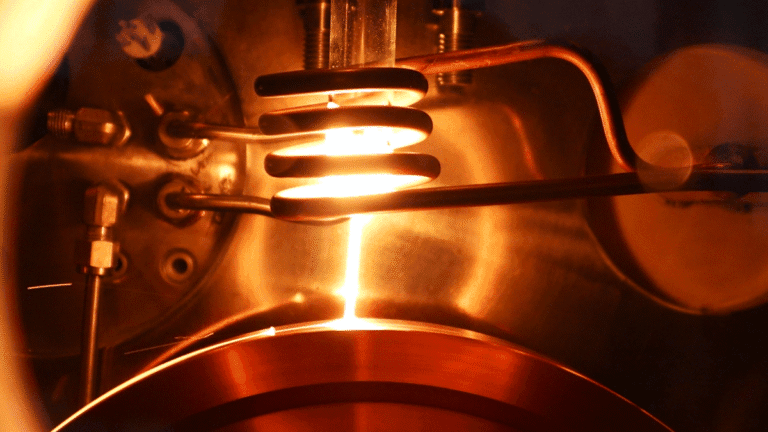
In a groundbreaking development that promises to reshape industries from electric vehicles to renewable energy, artificial intelligence has demonstrated an unprecedented ability to accelerate the discovery of new materials. A UK-based company, Materials Nexus, in collaboration with the Henry Royce Institute at the University of Sheffield, has leveraged AI to develop a novel rare-earth-free permanent magnet, dubbed MagNex, at a speed previously unimaginable – 200 times faster than traditional human-led research methods. This monumental achievement, completed in just three months, marks a significant leap forward in addressing critical supply chain vulnerabilities and environmental concerns associated with conventional rare-earth magnets.
The Rare Earth Conundrum: Why MagNex is a Game-Changer
Permanent magnets are indispensable components in a vast array of modern technologies, powering everything from the motors in electric vehicles (EVs) and wind turbines to advanced robotics and drones. The demand for these magnets is projected to skyrocket, with the EV industry alone expecting a tenfold increase by 2030. However, the production of the most powerful and efficient magnets has historically relied on rare earth elements such as neodymium and dysprosium. These materials, while effective, present a significant challenge: they are indeed ‘rare,’ making their supply vulnerable to geopolitical tensions and price fluctuations. China, for instance, controls a dominant share of the world’s rare earth mining and processing, creating a near-monopoly that leaves other markets susceptible to disruptions [1].
Beyond supply chain concerns, the extraction and processing of rare earth materials are environmentally intensive, often involving damaging mining practices and energy-intensive procedures. The urgent need for sustainable and secure alternatives has driven extensive research into rare-earth-free magnets. While some companies, like Niron Magnetics, have been developing alternatives for over a decade, bringing them to mass production has proven to be a slow and arduous process [1]. This is where MagNex, and the AI behind its creation, emerges as a revolutionary solution.
AI: The Catalyst for Accelerated Discovery
Materials Nexus’s breakthrough lies in its innovative application of artificial intelligence to material discovery. The company’s AI platform systematically sifts through an immense chemical space, analyzing over 100 million rare-earth-free material compositions. This process is not a random trial-and-error; instead, the AI factors in crucial variables such as cost, supply chain security, performance, and environmental impact to identify promising candidates [1].
As Jonathan Bean, CEO and co-founder at Materials Nexus, explained, “The platform, rapidly and systematically, searches through the periodic table for elemental combinations that have the desired material properties… All of our data is generated in-house through quantum mechanic calculations; this means our data is more accurate and extensive than experimental data sets. This data is then fed through our machine learning algorithms and the formula is modelled and optimized” [2]. This sophisticated approach allows for the rapid identification and optimization of material formulas, drastically reducing the time and resources typically required for such complex research.
The efficiency of this AI-driven process is truly remarkable. What would have traditionally taken years, or even decades, was accomplished in a mere three months. After the AI performed the initial heavy lifting, MagNex was synthesized and rigorously tested with the support of the Henry Royce Institute at the University of Sheffield. Professor Iain Todd, metallurgy and materials processing at the University of Sheffield, lauded the collaboration, stating, “The combination of Materials Nexus’ approach of using AI for materials discovery and the world-class facilities we have for manufacture of advanced alloys in the Henry Royce Institute here at Sheffield has allowed a novel magnetic material to be developed with breathtaking speed” [1].
MagNex: A Sustainable and Cost-Effective Solution
The advantages of MagNex extend beyond its rapid discovery. Materials Nexus reports that MagNex can be produced at just 20% of the material cost of existing rare earth magnets, representing a significant economic benefit. Furthermore, its production boasts a remarkable 70% reduction in material carbon emissions compared to traditional rare-earth alternatives [1, 2]. These cost and environmental benefits position MagNex as a highly attractive solution for industries seeking to reduce their ecological footprint and secure their supply chains.
The implications of this breakthrough are far-reaching. The development of a high-performance, rare-earth-free magnet opens doors for more sustainable and efficient electric motors, which are crucial for the widespread adoption of EVs and the advancement of clean energy technologies. By reducing reliance on scarce and geopolitically sensitive materials, MagNex contributes to a more resilient and environmentally responsible global economy.
The Future is AI-Powered: Beyond Magnets
The success of MagNex is not an isolated incident but a testament to the transformative potential of AI in material science. As Dr. Jonathan Bean noted, “AI-powered materials design will impact not only magnetics but also the entire field of materials science – we have now identified a scalable method for designing new materials for all kinds of industrial needs” [2]. The AI platform developed by Materials Nexus is already attracting interest for its potential applications in diverse fields, including semiconductors, catalysts, and coatings. The company plans to collaborate with industrial partners to accelerate the discovery of viable, cost-effective, and sustainable next-generation materials across various sectors.
This development signals a paradigm shift in how new materials are discovered and engineered. By automating and optimizing the initial stages of material research, AI can dramatically shorten development cycles, reduce costs, and foster the creation of innovative solutions to pressing global challenges, from energy efficiency to environmental sustainability. The rapid creation of MagNex is just the beginning of what promises to be an exciting era of AI-driven material innovation.
References
[1] C.C. Weiss. “AI discovers new rare-earth-free magnet at 200 times the speed of man.” New Atlas, June 12, 2024. https://newatlas.com/materials/ai-rare-earth-free-magnet-discovery/
[2] Ameya Paleja. “UK firm makes rare earth element-free magnet 200 times faster with AI.” Interesting Engineering, June 11, 2024. https://interestingengineering.com/innovation/rare-earth-free-permanent-magnet



